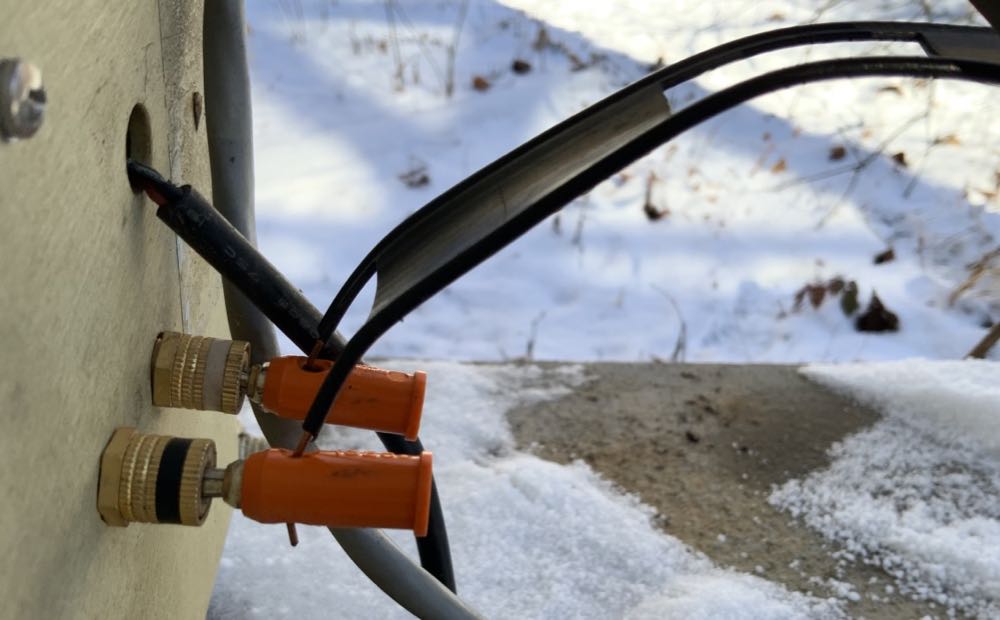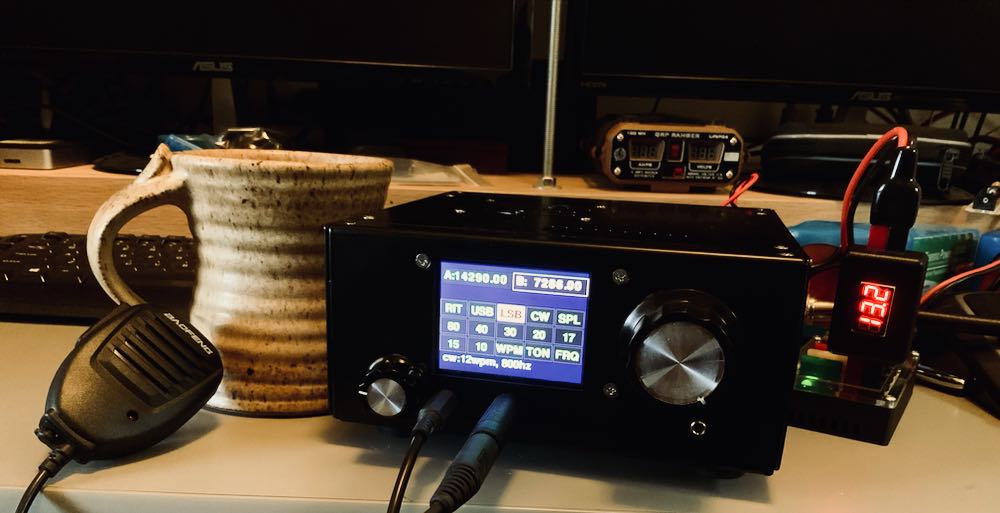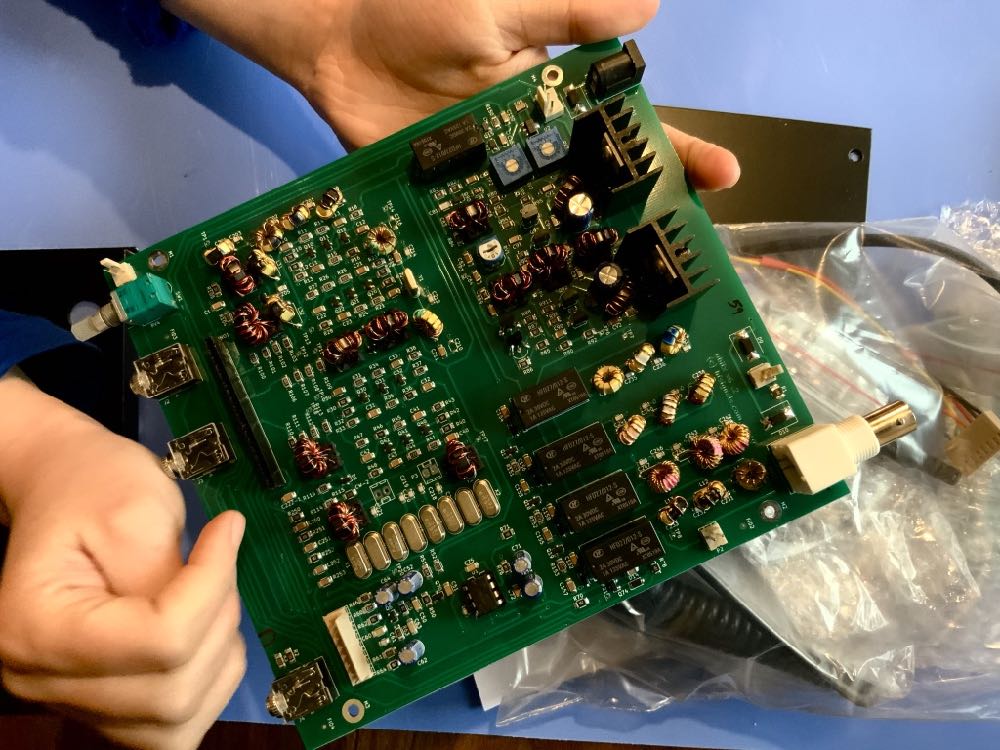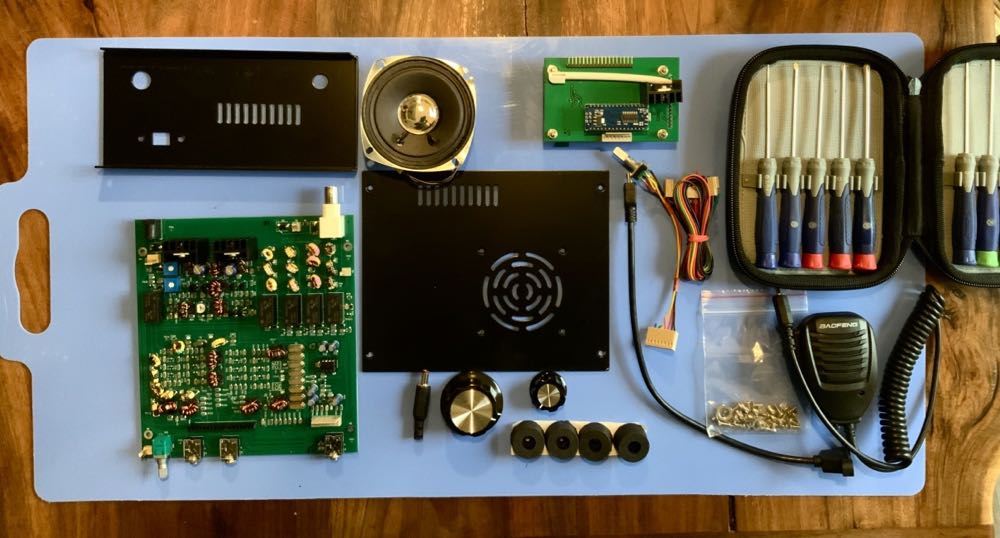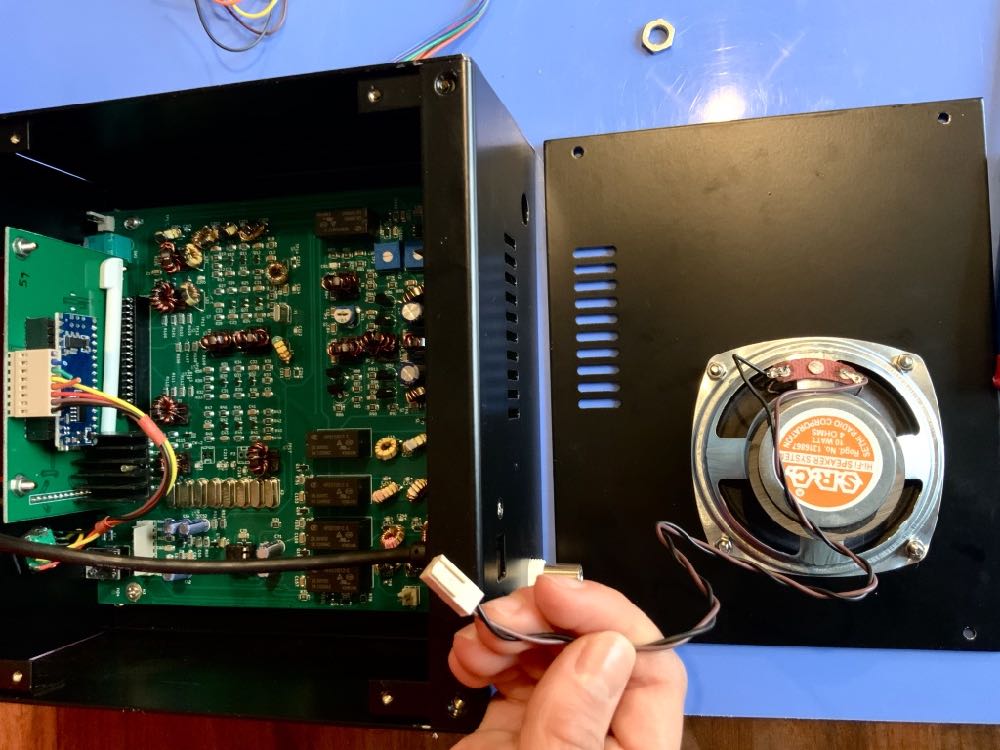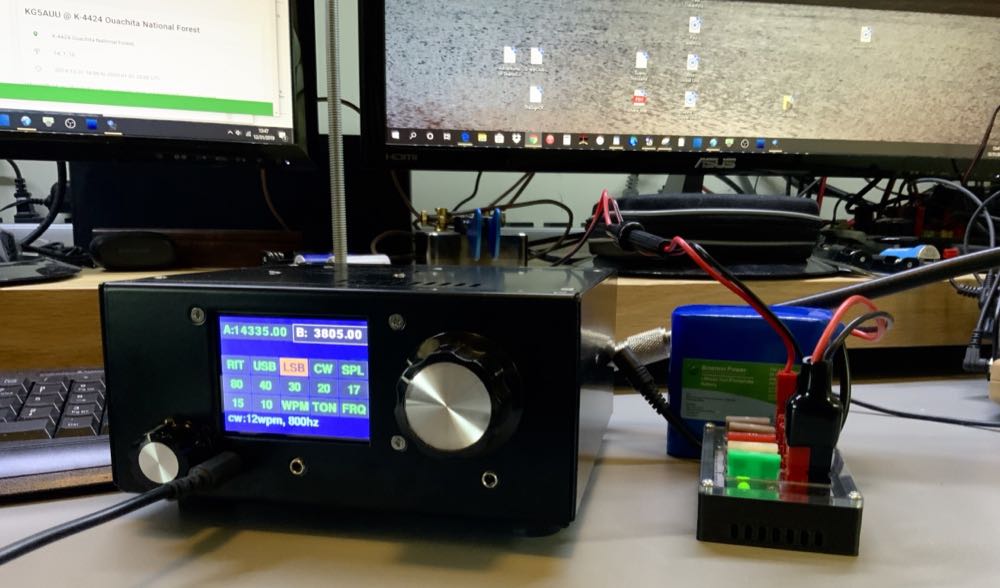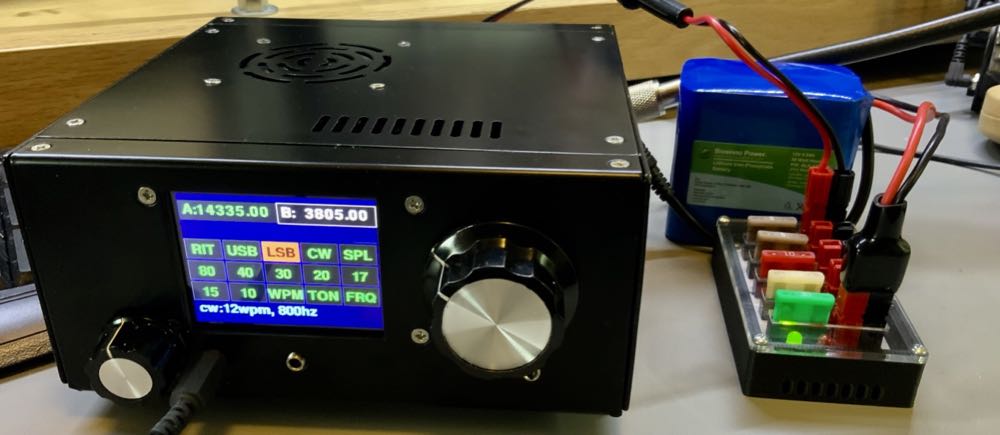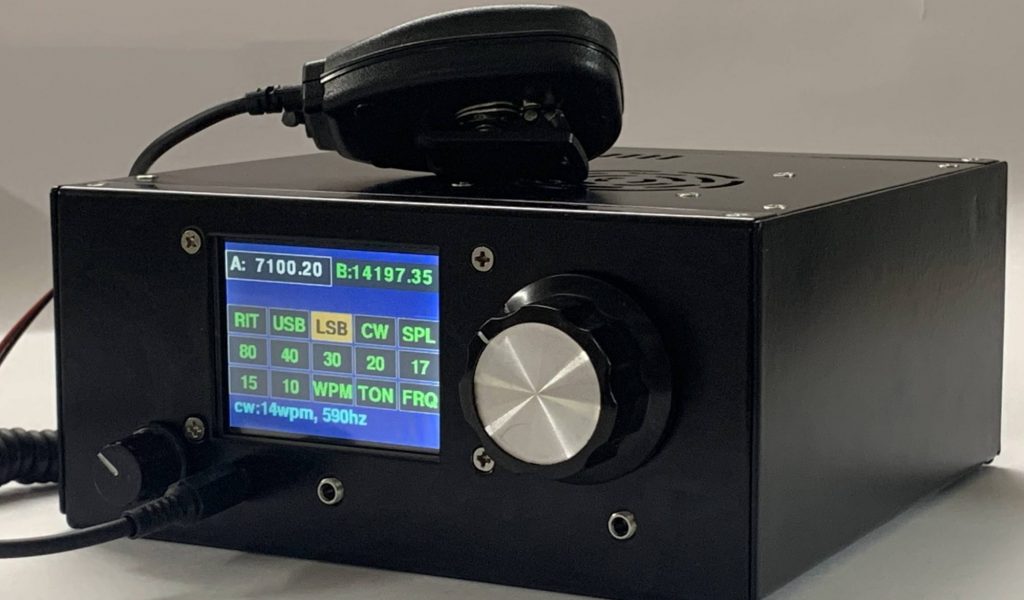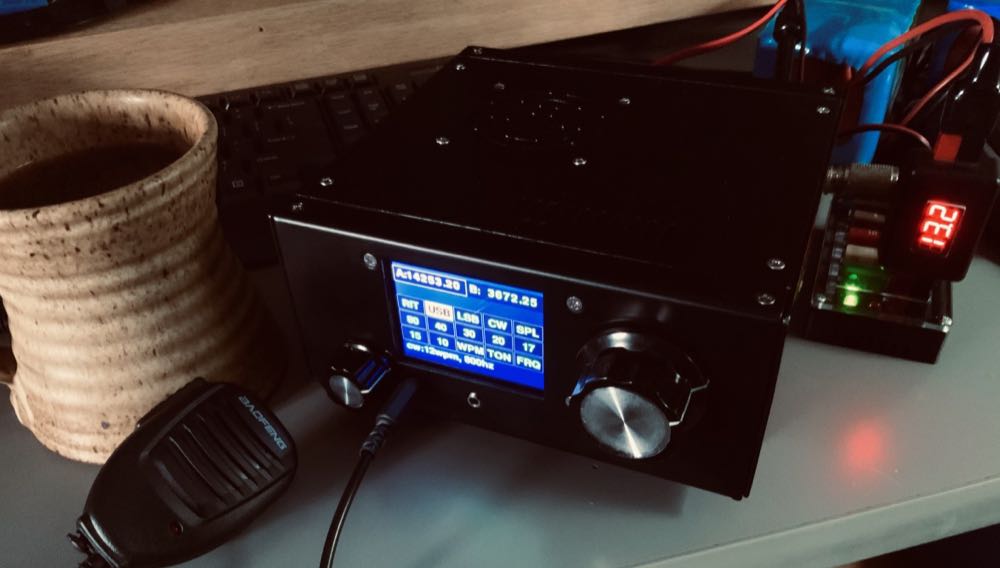 Yesterday, a weather front moved through the area that dropped temperatures from an unseasonably high of 50F to 25F in the space of a couple of hours. Fronts like this always equate to high winds here at our altitude. This time, it packed a little snow as well.
Yesterday, a weather front moved through the area that dropped temperatures from an unseasonably high of 50F to 25F in the space of a couple of hours. Fronts like this always equate to high winds here at our altitude. This time, it packed a little snow as well.
Last night, around 22:00 local, our power went out due to a fallen tree further down the road.
Here at SWLing Post HQ, we don’t panic about power outages. As I’ve mentioned before, our refrigerator, freezer and some of our home lighting is solar-powered and off-grid–we also rely on passive solar heating and a good wood stove to keep us warm and cozy.
Without fail, I always use power outages as an excuse to play radio on battery power.
This morning, the uBITX V6 transceiver was already hooked up to a LiFePo battery on my desktop, so I simply turned it on and started tuning around the 40 meter band, where I had recently logged a few POTA contacts. Problem was, the band was absolutely dead, save a couple weak stations. After thinking about it a few seconds (keep in mind this was pre-coffee) I put on my boots and coat, walked outside and confirmed my suspicions: the antenna feedline had become detached from my external ATU box.
The winds were strong enough last night, that the ladder line pulled itself out of the banana connector jacks on the side of the ATU box. This happens quite often during periods of high winds and is a bit annoying. Of course, I could secure the feedline in such a way that it would easily survive high winds without disconnecting, but frankly this is an intentional design choice. You see, when a black bear walks into my feedline, it easily disconnects before the bear gets tangled, up, frustrated and yanks my antenna out of the tree!
Trust me on this: bears and antennas don’t mix. I speak from experience.
After re-connecting the antenna, I fired up my portable alcohol stove (the one you might have seen in this post), boiled water, and made a fresh cup of coffee to take back to the shack.
I turned on the uBITX once again and found that the 40 meter band was chock-full of strong signals.
It’s time to go chase a few more parks today and plot my next POTA activation.
Frankly, I’m in no hurry for the power to be restored. It’s a wonderful excuse to play radio.
Readers: Anyone else enjoy radio time when the grid goes down? Please comment!
Do you enjoy the SWLing Post?
Please consider supporting us via Patreon or our Coffee Fund!
Your support makes articles like this one possible. Thank you!

